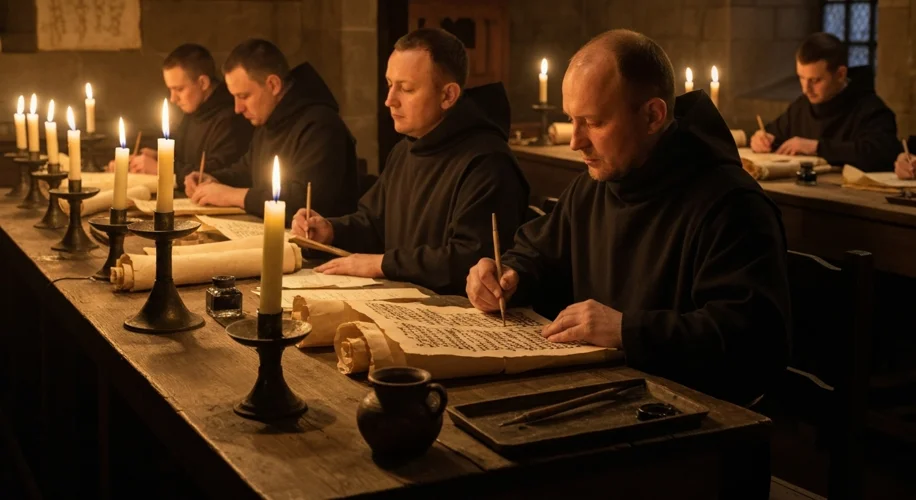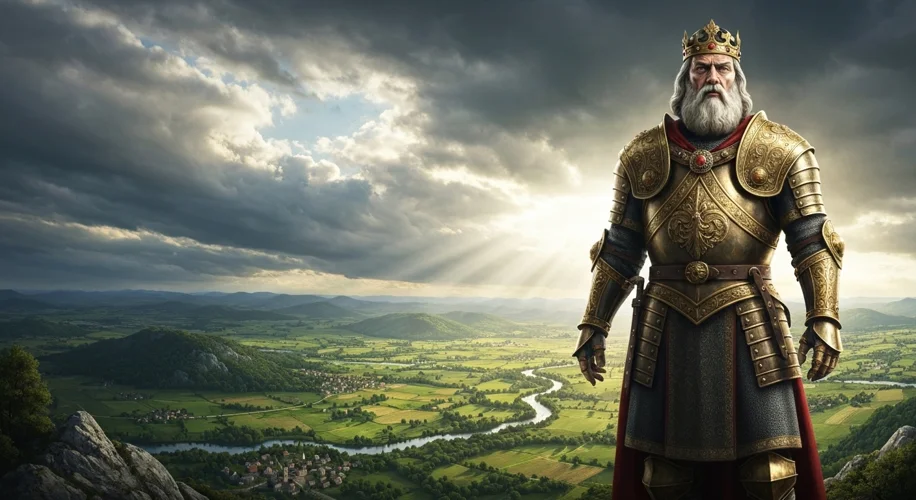Picture this: Europe, circa the late 8th century. It’s a fragmented landscape, a patchwork quilt of warring kingdoms and scattered settlements, still reeling from the fall of the Western Roman Empire centuries earlier. The “Dark Ages” – a term often used, though perhaps too simplistically – saw a decline in centralized authority, literacy, and grand infrastructure. Yet, amidst this disarray, a figure emerged who would not only reshape the political map but also ignite a cultural and intellectual flame that would illuminate the continent for generations. His name was Charles, later known as Charlemagne, the King of the Franks.
Born around 742 AD, Charles was the son of Pepin the Short, a powerful mayor of the palace who had effectively usurped the Merovingian kings. From his father, Charles inherited a kingdom, the Frankish realm, and a taste for ambition. But Charlemagne was no ordinary warrior-king. He was a man of immense physical stature, renowned for his imposing presence and penetrating gaze. Legend has it he stood well over six feet tall, a giant among men in an era of generally shorter stature.

His reign, beginning as King of the Franks in 768 AD, was characterized by relentless military campaigns. Charlemagne understood that power, in his time, was built on conquest and consolidation. He spent much of his life on horseback, leading his armies against Lombards in Italy, Saxons in northern Germany, Avars in modern-day Hungary, and Muslims in Spain. These campaigns were brutal, often involving massacres and forced conversions, but they were undeniably effective. By the turn of the millennium, Charlemagne had united a vast swathe of Western and Central Europe under his rule, stretching from the Pyrenees to the Elbe River, and from the North Sea to the Italian peninsula. It was a feat of political and military organization unseen since the days of Rome.
His greatest triumph, however, came on Christmas Day, 800 AD, in St. Peter’s Basilica in Rome. Pope Leo III, seeking protection from his enemies, crowned Charles “Emperor of the Romans.” This act was more than just a coronation; it was a symbolic revival of the Western Roman Empire, albeit in a new guise. Charlemagne, the Frankish king, was now the protector of Christendom, the successor to Augustus. The coronation underscored the deep intertwining of political power and religious authority that would define the medieval period.
But Charlemagne’s legacy extends far beyond the battlefield and the imperial crown. He was a patron of learning and culture, a force behind what historians call the “Carolingian Renaissance.” Recognizing the decline in literacy and scholarship, Charlemagne actively sought out scholars from across Europe. He invited the Anglo-Saxon monk Alcuin of York to his court at Aachen, making him the head of his palace school. Under their guidance, the court became a center of intellectual activity. Scribes meticulously copied ancient manuscripts, preserving classical texts that might otherwise have been lost forever. The script itself was standardized into the clearer Carolingian minuscule, which became the basis for modern lowercase letters.

Education was promoted, and Charlemagne himself, though reportedly unable to write fluently, possessed a keen intellect and a thirst for knowledge. He ordered the establishment of schools attached to monasteries and cathedrals, aiming to educate not just clergy but also the sons of nobles. His capitularies, or royal decrees, emphasized the importance of learning and the need for a literate administration. This cultural revival fostered a sense of shared identity among the diverse peoples of his empire, laying some of the groundwork for future European civilization.
The consequences of Charlemagne’s reign were profound and far-reaching. His empire, though it would eventually fragment after his death in 814 AD, created a political framework that influenced the development of modern European states, particularly France and Germany. The imperial title he revived would be claimed by rulers for centuries. More importantly, the Carolingian Renaissance ensured the survival of classical knowledge and fostered a renewed appreciation for learning that would influence the intellectual currents of the Middle Ages and beyond.
Charlemagne was a complex figure: a formidable warrior, a shrewd politician, and a visionary leader. He was a man who, at a pivotal moment in history, grasped the reins of power and steered Europe towards a new era. His reign serves as a powerful testament to the impact one individual can have in shaping the course of civilization, bridging the gap between the ancient world and the burgeoning kingdoms of medieval Europe. He was, in many ways, the father of a continent, a titan whose shadow stretched across centuries, leaving an indelible mark on the echoes of the past.


